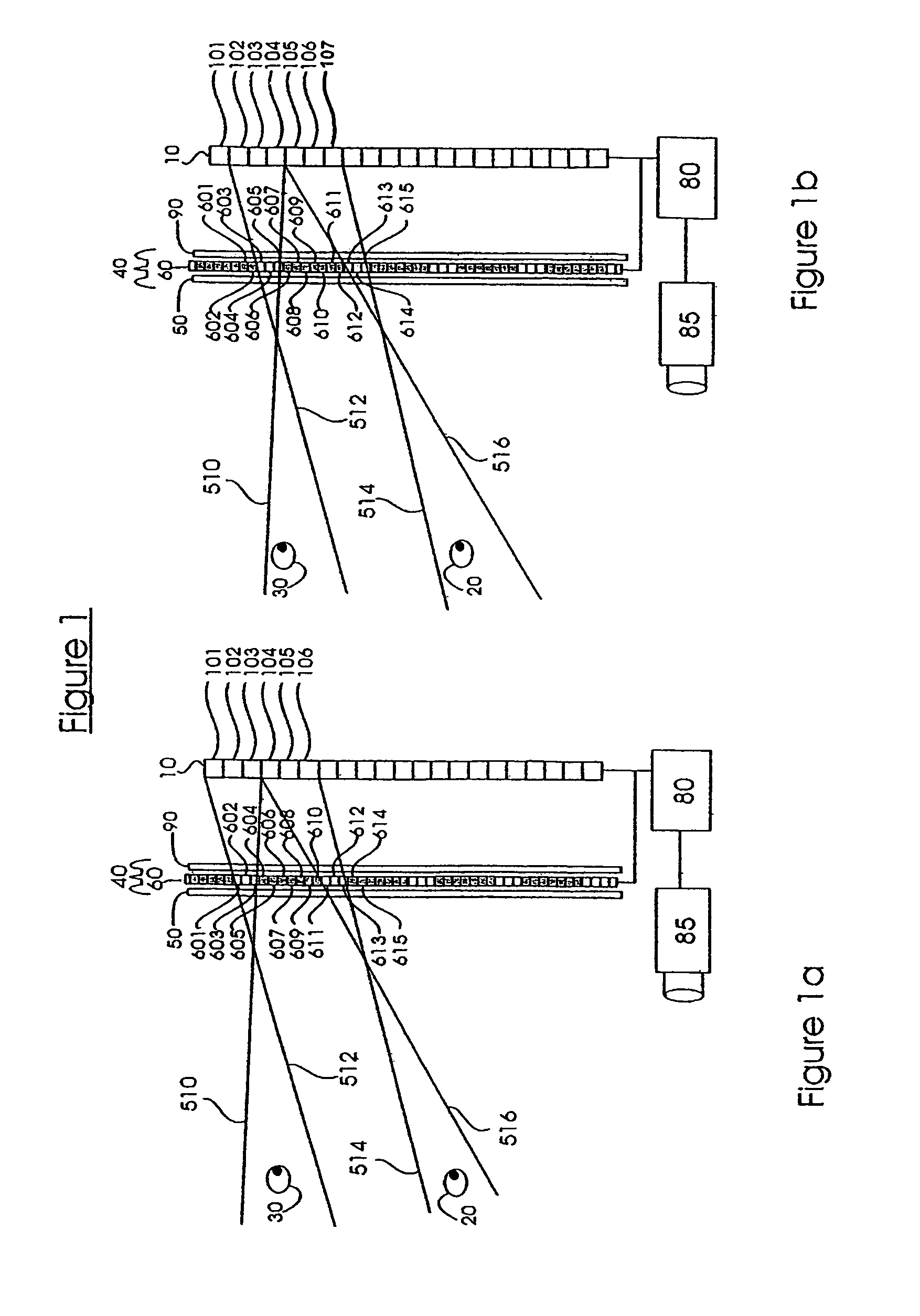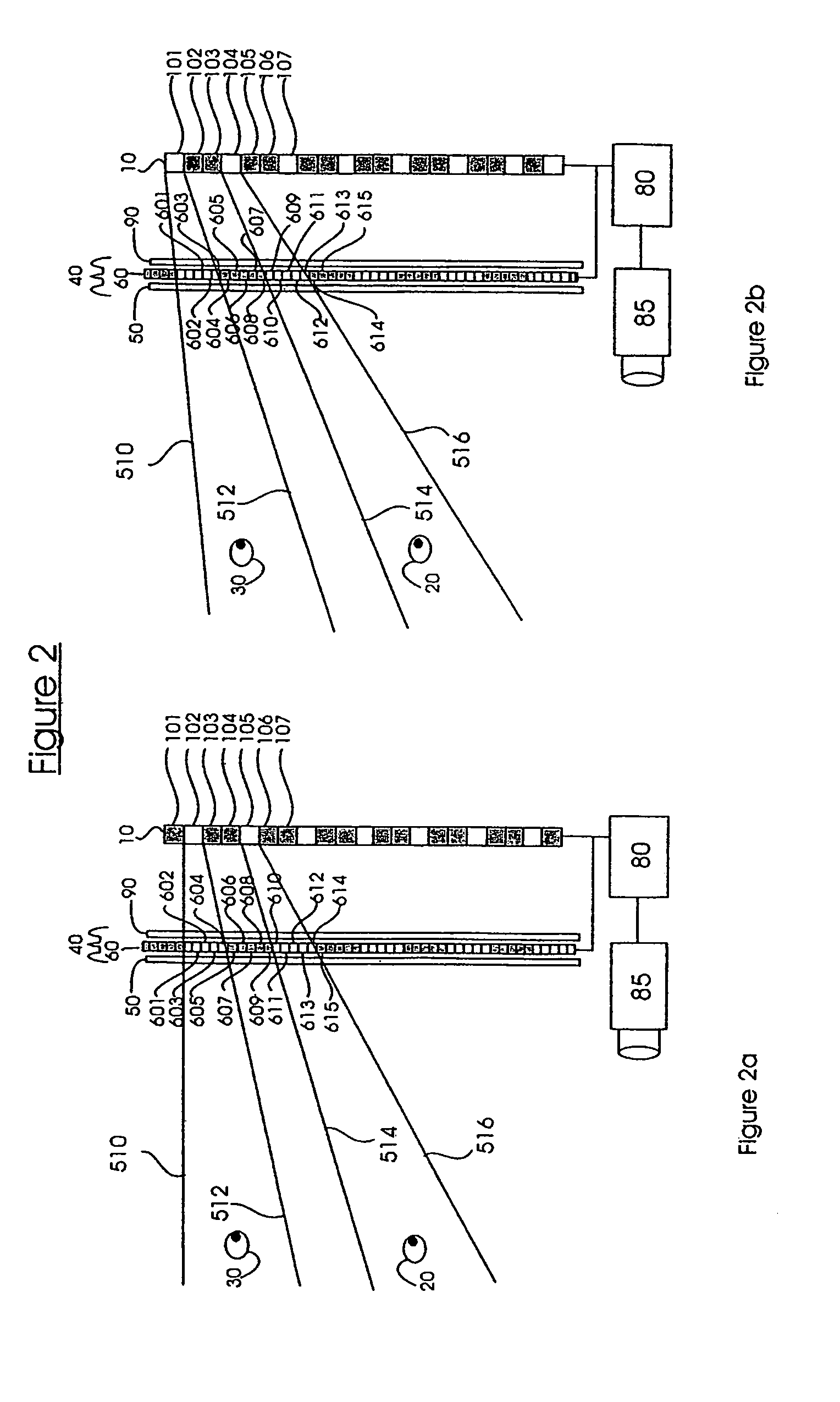Systems for and methods of three dimensional viewing
a three-dimensional and system-based technology, applied in the field of three-dimensional viewing systems, can solve the problems of reducing the resolution of the display to a large extent, not well adapted to viewing systems, and requiring lenses, prisms, or mirrors held in proximity with the viewer's eyes, etc., and achieve the effect of low cos
- Summary
- Abstract
- Description
- Claims
- Application Information
AI Technical Summary
Benefits of technology
Problems solved by technology
Method used
Image
Examples
Embodiment Construction
[0100]The present invention is of systems and methods which can be used for three-dimensional viewing, including three dimensional displays and projectors. In particular, the present invention provides improvements over prior art designs for three-dimensional viewing, such as the designs described in U.S. Pat. No. 5,822,117 to Kleinberger et al. and PCT Publication WO97 / 26577, as well as other prior art designs, as is specifically indicated below.
Improvements in Parallax Barrier Technology: Time-multiplexing of Elements of the Images
[0101]Classical parallax barrier systems have intrinsically low resolution, since 50% of the display surface is unavailable to each eye. They also have an intrinsically small sweet spot, since they depend on the left and right eyes being in particular positions with respect to the parallax barrier and the display, and if the eyes deviate from their expected positions a degradation of the perceived stereoscopic image is experienced. The movement-permissiv...
PUM
 Login to View More
Login to View More Abstract
Description
Claims
Application Information
 Login to View More
Login to View More - R&D
- Intellectual Property
- Life Sciences
- Materials
- Tech Scout
- Unparalleled Data Quality
- Higher Quality Content
- 60% Fewer Hallucinations
Browse by: Latest US Patents, China's latest patents, Technical Efficacy Thesaurus, Application Domain, Technology Topic, Popular Technical Reports.
© 2025 PatSnap. All rights reserved.Legal|Privacy policy|Modern Slavery Act Transparency Statement|Sitemap|About US| Contact US: help@patsnap.com



